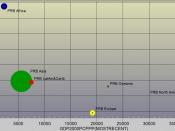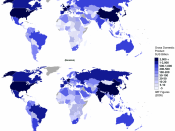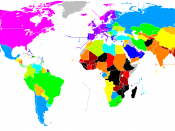The Role of the Purchasing Power Parity in the Real WorldIn its strictest definition, the theory of the purchasing power parity states that, "the exchange rate between countries' currencies equals the ratio of their price levels, as measured by the money prices of a reference commodity basket" (Krugman and Obstfeld, 2000). Developed in the early 1900s by a man named Gustav Cassel, this theory was based on the idea that in an ideal world with an efficient market, the same goods should have the same price universally.
The law of one price, which is the building block of the theory of the purchasing power parity, states that, "under free competition and in the absence of trade impediments, a good must sell for a single price regardless of where in the world it is sold" (Krugman and Obstfeld, 2000). The purchasing power parity or the PPP is also loosely explained as the Big Mac index, as introduced by The Economist in the mid-1980s.
In the absolute definition of PPP, the Big Mac, a consumer good sold in practically every part of the world, takes the place of the commodity basket. Using this route gives a more simplistic definition of the theory. Therefore, a Big Mac being sold in the United States must have the same price as Big Mac sold in Australia, for example.
Looking at PPP with a monetary approach to the exchange rate will show the behavior of exchange rate in the long run, in terms of the supply of and demand for money. An increase in the national interest rate results in the depreciation of the national currency. Likewise, an appreciation of the country's currency will be resulted by a decrease in the national interest rate.
However, recent data cannot fully support the theory of the purchasing power...


